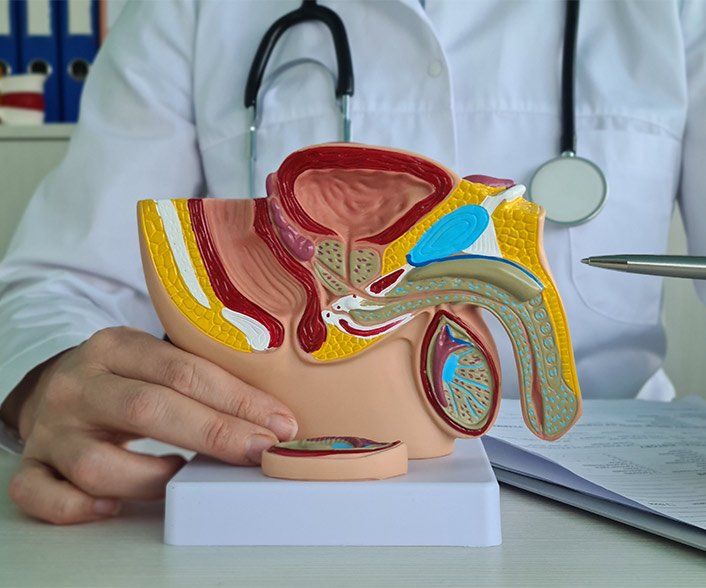Varicoceles affect nearly 15% of men and are one of the leading causes of male infertility and chronic testicular pain. Traditionally, varicoceles have been managed with surgery, but advancements in minimally invasive medicine now allow patients to explore non-surgical options that are safer, faster, and more comfortable. Among these, varicocele embolization is considered the most effective alternative, offering excellent outcomes without the risks of open surgery.
Let’s explore the top six benefits of treating varicoceles without surgery and why more patients are choosing minimally invasive care.
1. Faster Recovery Time
For many men, the thought of spending weeks away from work, studies, or daily routines is stressful. Surgery often requires two to three weeks of downtime, which can feel like forever when you have responsibilities. Non-surgical treatment changes this.
With embolization, recovery usually takes just 24 to 48 hours. Imagine getting treated on a Friday and being back to work or light activity by Monday. This quicker recovery allows you to return to your responsibilities and lifestyle with minimal disruption—an advantage especially important for working professionals and students.
2. No General Anesthesia Risks
General anesthesia can be intimidating. While it makes surgery painless, it also comes with risks like nausea, vomiting, sore throat, dizziness, or even complications in people with underlying health issues.
Non-surgical embolization avoids these issues by using local anesthesia with mild sedation. You remain relaxed and comfortable but awake. This means no groggy feeling, no long wait for your body to clear anesthesia, and far fewer complications. For patients who feel anxious, moderate sedation is available—striking the right balance between comfort and safety.
3. Outpatient Procedure – No Hospital Stay
Traditional varicocele surgery often requires an overnight hospital stay for monitoring. This not only increases costs but also keeps you away from the comfort of your home.
In contrast, embolization is done in an outpatient setting. You arrive, undergo the procedure, and return home the same day. Recovery in your own space makes the entire experience less stressful and more comfortable. Many patients appreciate the privacy and freedom that comes with outpatient care.
4. No Large Incisions or Visible Scars
Surgery involves one or more cuts in the groin or lower abdomen, which may leave scars. Beyond cosmetic concerns, these incisions increase the risk of infection and require daily care during recovery.
Embolization, however, is performed through a tiny needle puncture—about the size of a pinhole—usually in the groin or neck. There’s no need for stitches, and in most cases, scarring is minimal or invisible. For men who care about appearance and want to avoid prolonged wound care, this is a clear benefit.
5. Return to Exercise and Intimacy Sooner
After surgery, doctors typically advise avoiding gym workouts, heavy lifting, or sports for up to two weeks. Sexual activity may also need to be delayed for a month. For men with active lifestyles, this downtime can feel frustrating.
With embolization, recovery guidelines are much more flexible. Most patients resume exercise within 7–10 days and sexual activity within 1–2 weeks. This means you can get back to enjoying your normal physical and intimate life far sooner than with traditional surgery.
6. Lower Risk of Complications
Surgical risks include infections, arterial injury, fluid buildup (hydrocele), and even recurrence. Non-surgical embolization significantly reduces these risks because it uses image-guided precision to directly block the faulty veins while protecting healthy structures.
This targeted approach makes embolization not only safer but also highly effective. For many patients, it also improves fertility outcomes by restoring healthy blood flow in the testicles—without exposing them to the challenges of open surgery.
Expert Opinion: Dr. Pradeep Muley
When considering varicocele treatment, the doctor’s experience matters as much as the method itself. Dr. Pradeep Muley, an expert interventional radiologist, has extensive experience performing embolization and other minimally invasive procedures. His patient-centered approach ensures reduced risks, faster recovery, and improved outcomes—making non-surgical varicocele treatment a trusted choice for men seeking relief.
FAQs on Varicocele Treatment Without Surgery
Q1. Is varicocele embolization painful?
No, the procedure is usually well tolerated. Local anesthesia numbs the area, and mild sedation keeps you relaxed. Most patients describe it as only mildly uncomfortable.
Q2. How long does the embolization procedure take?
On average, the procedure takes about 45 minutes to 1 hour. You’ll rest for a short time afterward and can usually return home the same day.
Q3. Will embolization affect my fertility?
Yes, in many cases it can actually improve fertility. By correcting the abnormal blood flow, testicular function often improves, which can enhance sperm quality.
Q4. Is embolization safer than surgery?
For most patients, yes. It carries fewer risks, avoids general anesthesia, and has a faster recovery time compared to surgery.
Q5. How soon can I return to normal life after the procedure?
Most patients resume daily activities within 24–48 hours, light exercise within a week, and sexual activity within two weeks.
Final Thoughts
Living with a varicocele doesn’t mean you have to go through invasive surgery. Thanks to minimally invasive medicine, varicocele embolization provides a safe, effective, and quicker alternative. With benefits such as shorter recovery, no general anesthesia, no hospitalization, and lower complication risks, it’s clear why this option is becoming the preferred choice worldwide.
For expert guidance and safe treatment, consulting with an experienced interventional radiologist like Dr. Pradeep Muley can help you make the right decision for your health and future.
